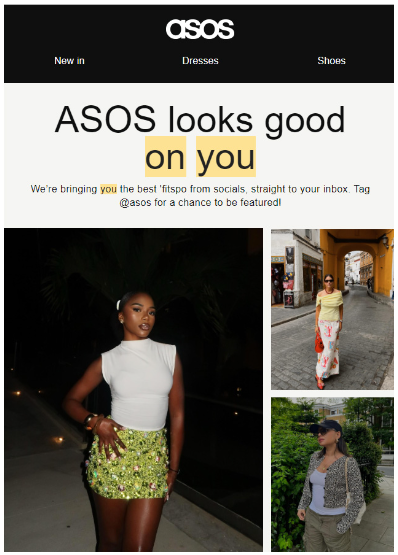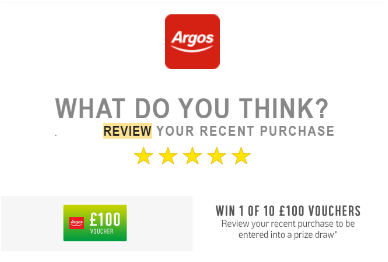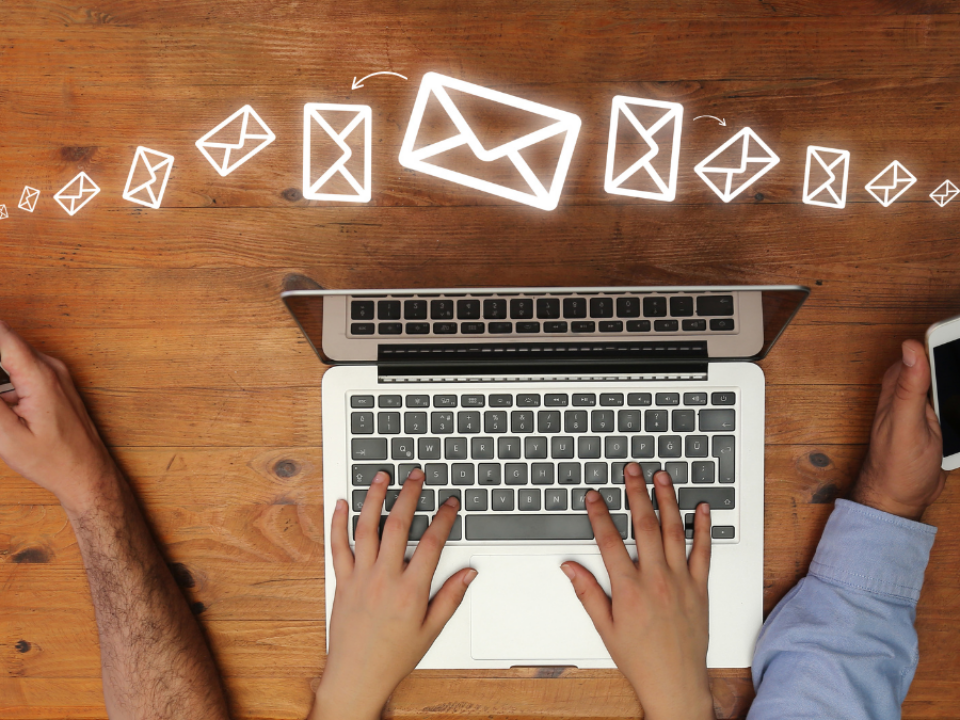How User-Generated Content Can Boost Your Email Marketing Performance
User-generated content (UGC) can transform your email marketing, but how? Read this guide for UGC examples, collection ideas, and tips on maximising your performance.

Content creation is one of the highest priorities for any marketer, but it’s also very time-consuming. However, there are more effective ways to create content than starting from a blank page.
User-generated content (UGC) is content produced by your audience. With the right permissions, brands can repurpose UGC in marketing activity.. It has become increasingly popular in recent years, with both B2C and B2B brands reaping the rewards of user-generated content in a world dominated by digital consumption.
The value of UGC is clear in an environment where brands need to produce content to engage audiences using SEO, email marketing, and social media.
However, it also poses a problem – if everything a brand creates needs to be consistent and work towards achieving business goals, how does user-generated content align when it’s not created by the marketing team?
In this guide, we’ll explore the strategic use of user-generated content (UGC) in email marketing campaigns and how it fits in with your overall marketing strategy. We’ll cover everything from the benefits of incorporating UGC to best practices and other key considerations, including usage rights and content collection methods.

What is user-generated content?
User-generated content (UGC) is produced by your audience. It could be photos, videos, or even text (e.g., reviews) created by your users, fans, or general audience. With appropriate permissions, marketers can repurpose user-generated content on their marketing channels.
For example, a clothing brand asks its customers to send photos of themselves wearing their favourite item in exchange for a perk or giveaway entry. The brand might then post these images on their website or social media, or place them into content blocks within their email marketing campaigns.
Why choose user-generated content?
User-generated content marketing is a proven, effective method of increasing brand awareness and fostering loyalty. Research shows that UGC influences 79% of people’s buying decisions, and Instagram posts with UGC get 70% more engagement.
The success of UGC is down to buyer psychology, as audiences love to see their peers using products or services before they decide. This gives legitimacy to your offering and demonstrates that your audience is more than just a following—it’s a community—one that potential buyers will want to be a part of.
What does this mean for email marketers?
UGC is applicable across many marketing areas, but we’ll focus on how it can transform your email marketing performance.
Email marketing is all about creating an ongoing connection with your customers. According to SaleCycle data, 50.7% buy something from a marketing email at least once a month, with 23.8% of shoppers making a purchase via email several times a month. Email is not only a way of keeping in touch with customers, but ensuring they stay loyal.
With UGC, you can show your subscribers that they are part of a community. Through user-generated content like photos and reviews, customers will feel assured that your products or services are just as good as you say they are.
Not only does user-generated content save you time and resources compared to creating your own, but it’s also proven to be more effective in persuading your audience to take action. For email marketing, that action could be click-throughs or conversions, both of which can see positive impacts from UGC.
Let’s look at the types of UGC, and how they can work specifically for email marketing.
Types of user-generated content
Reviews
Both B2B and B2C businesses can and should collect reviews. 93% of buyers cite reviews as making an impact on their purchase decision, with customers being 1.5X more likely to be motivated by an online review than by a discount offer.
Of course, customers can find reviews themselves via third-party platforms, or on your website, but often these people are already in the consideration stage of purchasing. By showcasing reviews via emails direct to your customer’s inbox, you can demonstrate that your offering is really as good as you say it is.
This is particularly effective when paired with audience segmentation and email personalisation, whereby marketers can send relevant emails to subscribers who have shown interest in products, abandoned baskets or purchased similar items previously. Including reviews in these emails adds influence to your messaging, and ultimately encourages them to take action.
Here’s a simple example of using reviews in email marketing from the sustainable clothing brand, Rapanui:

Comments
Social media is a divisive place, but it can be a goldmine for brands with a loyal following. You’ve probably seen brands re-use comments on their posts as content, and this can be useful for email, too.
Like reviews, positive comments provide additional influence to your content. Used correctly, they demonstrate to your audience that real people love your products/services.
Social media comments are often more spontaneous than reviews, so you’ll need to have a process for checking your old posts and selecting the right ones to use.
Photos and videos
This is one of the most effective types of user-generated content, because it quite literally shows your product in situ.
Many brands will offer an incentive to encourage users to share their photos or videos. An easy way to organise entries, and also ensure permission is gained, is to run a specific campaign with a hashtag and allow people to use this hashtag on the content they want to share in exchange for a discount code or prize draw entry.
A campaign-led approach also allows you to be clear with your audience about how content will be used, and you can create relevant policy documents on your website to clarify this.
In terms of email marketing, we know that images are an integral part of any campaign, and ensuring you have a solid collection of relevant imagery is always a priority for marketers. Some email marketing platforms also support video embedding from YouTube, Instagram, or even TikTok, so if you are sourcing video content, you may choose to edit it all together into a highlight reel.
Here’s a great example of user-generated photo content in an email marketing campaign from online retail giant ASOS:

Before you start gathering photo or video content from your users, you will need to familiarise yourself with usage permissions. We’ll touch on this in the next section where we look at best practices for UGC, including privacy concerns, legal considerations and more…
User-generated content best practice
Let’s dig deeper into the best practices for sourcing and using user-generated content.
User-generated content permissions
Marketers are no strangers to the strict requirements of various data permissions and privacy laws. User-generated content falls under some of these familiar restrictions. UGC is subject to various UK laws, although the exact details of permission requirements are not always crystal clear.
To ensure marketers meet legal requirements with regards to data protection (both GDPR and UK Data Protection Act 2018), intellectual property rights and defamation laws, it’s smart to take a direct approach to permission.
If you intend to gather content for marketing purposes, make sure your audience understands exactly what this entails, including where this will be used, how you will store and share their content, and what personal details (if any) you will use.
User privacy
As with any data processing in marketing, it’s best practice to only process and keep the information you need and have permission for. So, if you are re-sharing Facebook comments in an email campaign, consider blurring surnames and profile photos, to protect the privacy of your audience.
Marketing consistency
It goes without saying that any email marketing campaign should align with your overall marketing strategy and campaign goals. User-generated content offers a fantastic way to interlink your marketing materials, creating one common thread throughout your channels.
The multiplier effect describes the positive impact of consistent messaging, which can reinforce the impact of your marketing and ultimately produce better results. Various studies estimate customers have 7-12 touchpoints with your brand before they make a purchase, so a consistent message across the board is vital.
Embrace email personalisation
We touched on this earlier, but let’s take a closer look. Email personalisation is proven to boost click-throughs and conversions, reduce customer acquisition costs, and lift total revenue by 5-15%.
User-generated content is so powerful because it speaks directly to the users, and allows them to feel seen and heard by brands. Personalisation allows marketers to send relevant content to their audience, and UGC acts as the cherry on top of these campaigns.
So, if you are running a re-targeting campaign to customers who visited your website but didn’t purchase, consider including reviews of the products they viewed, or even photos of your biggest fans using or wearing the items.
Make UGC collection and management easy
We’ve talked about how user-generated content can save time for busy marketers, but the opposite could be true if you don’t have a process in place for collecting, managing and storing content.
Depending on the method of collecting user-generated content, you will need to ensure it is accessible to all of your marketing team, so it can be used consistently across all channels. Marketers should also strive to keep track of content permissions, so it is clear how it can be used.
In short, treat UGC like any other important business documentation. Store it safely and securely in a way only those with permission can access it and utilise it as needed.
How to collect user-generated content for your email marketing campaigns
Now we’ve covered the ins and outs of user-generated content, it’s time to kickstart your campaign. Here are some tips for collecting UGC to upgrade your email marketing efforts:
Set your goals
As with any marketing activity, it’s vital that you have a goal in mind and work backward from there. If your goal is to increase email subscribers, your approach may be different from that of boosting click-throughs. Make sure your user-generated content campaign aligns with the overarching goal from the outset.
For example, if your goal is to increase conversions, consider asking users to share examples of how they use your products in their daily lives. Aspirational content is powerful when it comes to turning browsers into customers.
Offer incentives
While some customers will love your brand so much that they’ll be happy to share content for ‘free’, that’s not always the case. In order to collect a wide range of great quality user-generated content, it’s worth offering users an incentive
Don’t just stick to social
We’ve talked about the power of social media when it comes to collecting UGC, and that’s definitely the primary place for it. But don’t discount email marketing as a channel for collecting and sharing UGC. UK clothing brand Lucy & Yak runs a long-term UGC campaign to collect images of customers wearing their products, and this is often mentioned in email newsletters and promotions to ensure consistent messaging across the board.

Create a brand hashtag
Much like the above, an ongoing brand campaign with a set hashtag is a great way to collect user-generated content, especially on a platform like Instagram where you can easily search and find content using a hashtag.
With this approach, you are asking people to use your hashtag, but that shouldn’t mean you assume they will be okay with you repurposing their content—especially on another channel like email.
To ensure maximum clarity, it’s worth creating a user-generated content policy and linking in your social media bio and also replying to posts individually to ask permission from the user to re-share their content.
Post-purchase emails
Another way email marketing can be used to collect UGC is to use the email journey to ask customers to write a review or share photos after making a purchase. Again, make sure customers know how you will use this information and only reshare the personal details that are absolutely necessary, e.g., remove full names.

So, email marketing can be an invaluable tool for both collecting and sharing user-generated content as part of a healthy marketing mix. It’s proven to boost performance and encourage brand loyalty for many different types of brands.
Level up your email marketing game
Love the idea of user-generated content but haven’t got the time, resources, or skills in-house to make it happen? Want to know more about setting up email personalisation or creating a consistent marketing message?
We’re email marketing experts who will work with your marketing team to achieve your goals and boost your email performance.
Subscribe to our insights newsletter
Be the first to know what's trending in email and CRM.
Share this story
Related insights

Article 5 min read

